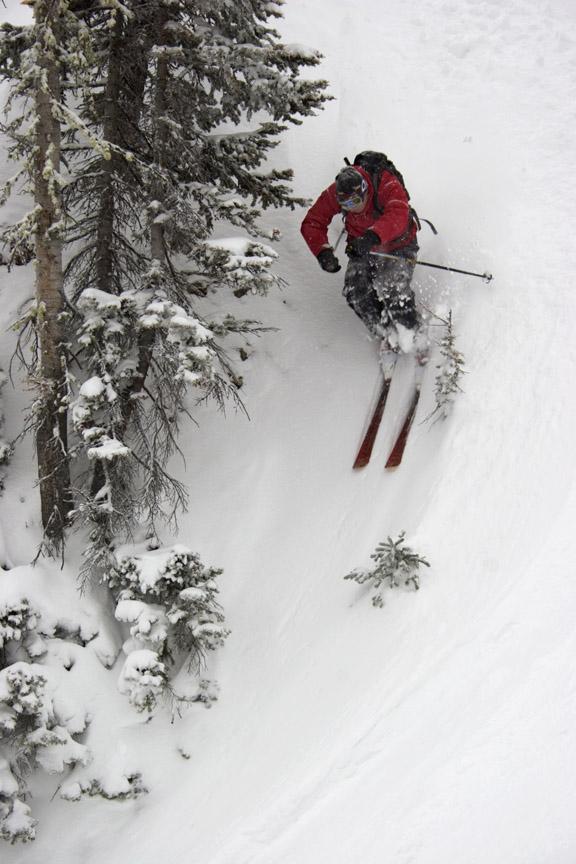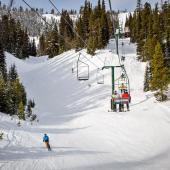The Stem Turn
A tactical trick for the steeps and tight spots.
A stem turn is a great trick for skiers of all levels. It can be used to help start a turn that you’re uncertain about, or help you catch your balance when the snow conditions throw you off. Keep in mind, this is not a turn you want to use on all terrain and in all conditions—but it sure does come in handy every once in a while. The Gullies and the Big Couloir at Big Sky, Headwaters Bowl at Moonlight, or the Hourglass at Bridger—these are common places you might find yourself using this move to avoid larger consequences.
A skier’s first turn on the steeps can be a scary one—the prospect of tumbling down a 40-degree face is unpleasant to say the least. Unfamiliar with the increased slope angle, a novice or intermediate skier may find his balance compromised. The stem turn creates a larger platform on which to balance, making the initial descent a more comfortable and confident one. The stem turn also creates the momentum needed to get moving from a stand-still position.
Another situation where this move comes in handy is when you find yourself off-balance in a series of turns. A quick-stepping move to your new outside ski allows your body to realign itself in the middle of the ski and give you that larger platform to balance on and move from. Instead of playing catch-up from the back seat, a stem turn helps you start over and get back to a balanced position quickly.
To make a stem turn, step your uphill leg out, pivoting the heel only, to form a wedge shape (stem) with your skis. This will point your uphill ski (the new outside ski) down the hill, in the direction of the new turn. In order to make this move you must extend your leg, which forces your body core (hips and torso) to open up and align above your legs. This gives your center of mass a stronger platform on which to balance while you’re creating your movement down the hill.
Without using the stem to create a balanced position, skiers on the steeps have a tendency to start their turns from the back seat, letting their skis move down the hill away from their cores. This makes it difficult to pivot or turn the skis; basically, the tails get stuck in the side of the hill. Practicing the stem turn, however, forces you to extend your leg and open up your pelvis and hips, allowing your center of mass to travel with your skis and stay balanced in the middle of the ski. Try the stem turn when you find yourself in a steep and sticky situation. Adding this move to your repertoire should make you feel more comfortable in all terrain and conditions.
Three Easy Steps to Practice the Stem Turn:
1. Start with your skis facing across the hill, in an athletic, parallel stance, keeping ankles, knees, and waist slightly flexed.
2. With an extension from both legs, step your uphill/outside ski out by pivoting the heel so that the tip is facing in the direction you want to travel.
3. As momentum is created, shift your weight or step to the new outside ski and steer your inside ski around the turn, so that your skis meet back in a parallel fashion at the end of the turn.
A ski instructor at Big Sky Resort and a member of the Professional Ski Instructors of America National Alpine Team, Nick Herrin is a two-time National Powder 8 Champion. For more practice on tactical tips, and for general ski lessons, contact the Big Sky Ski School at 995-5743. Private and group lessons are available every day throughout the winter.











